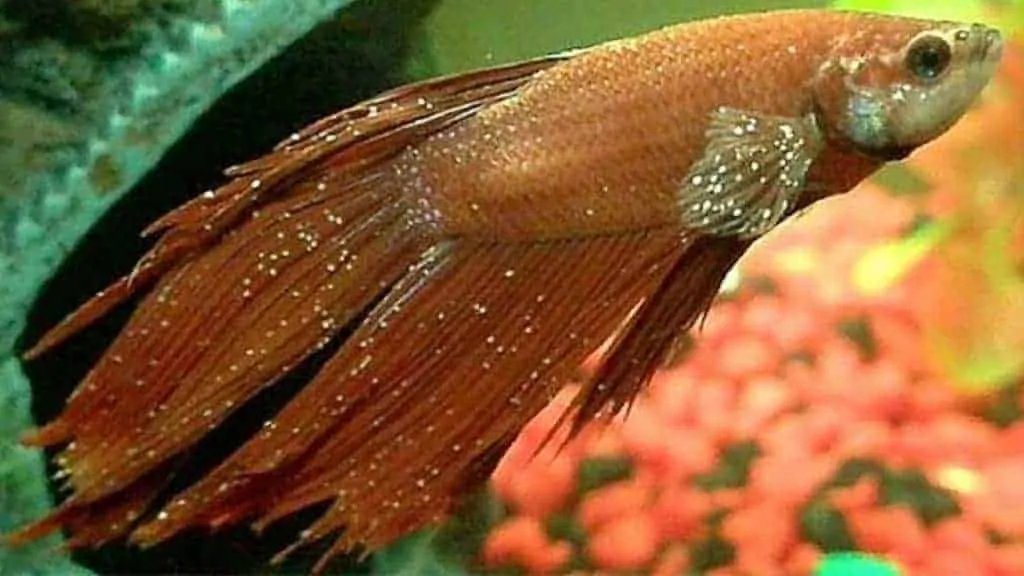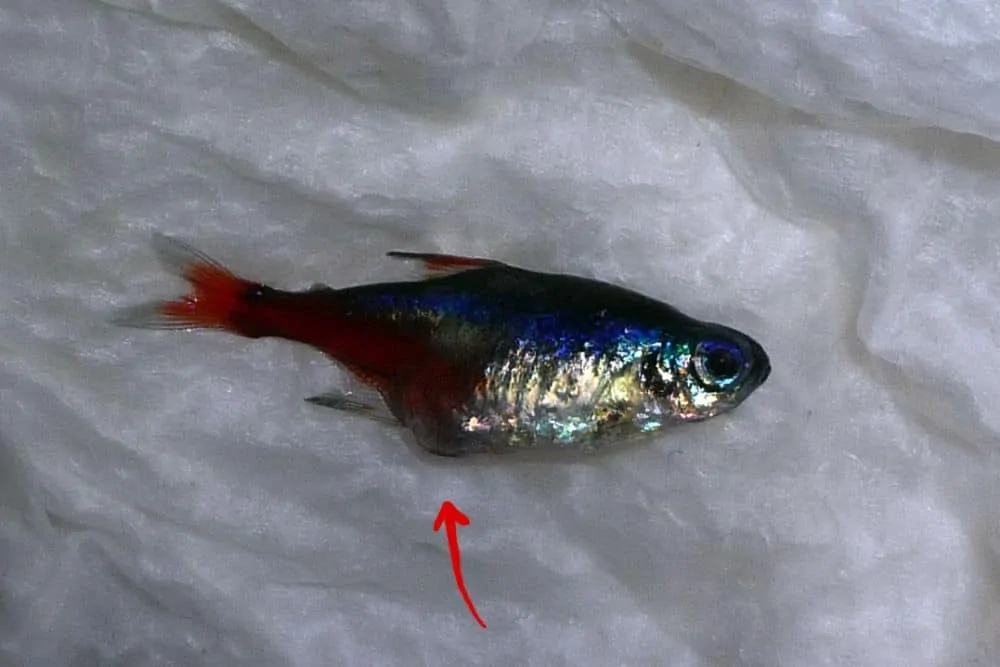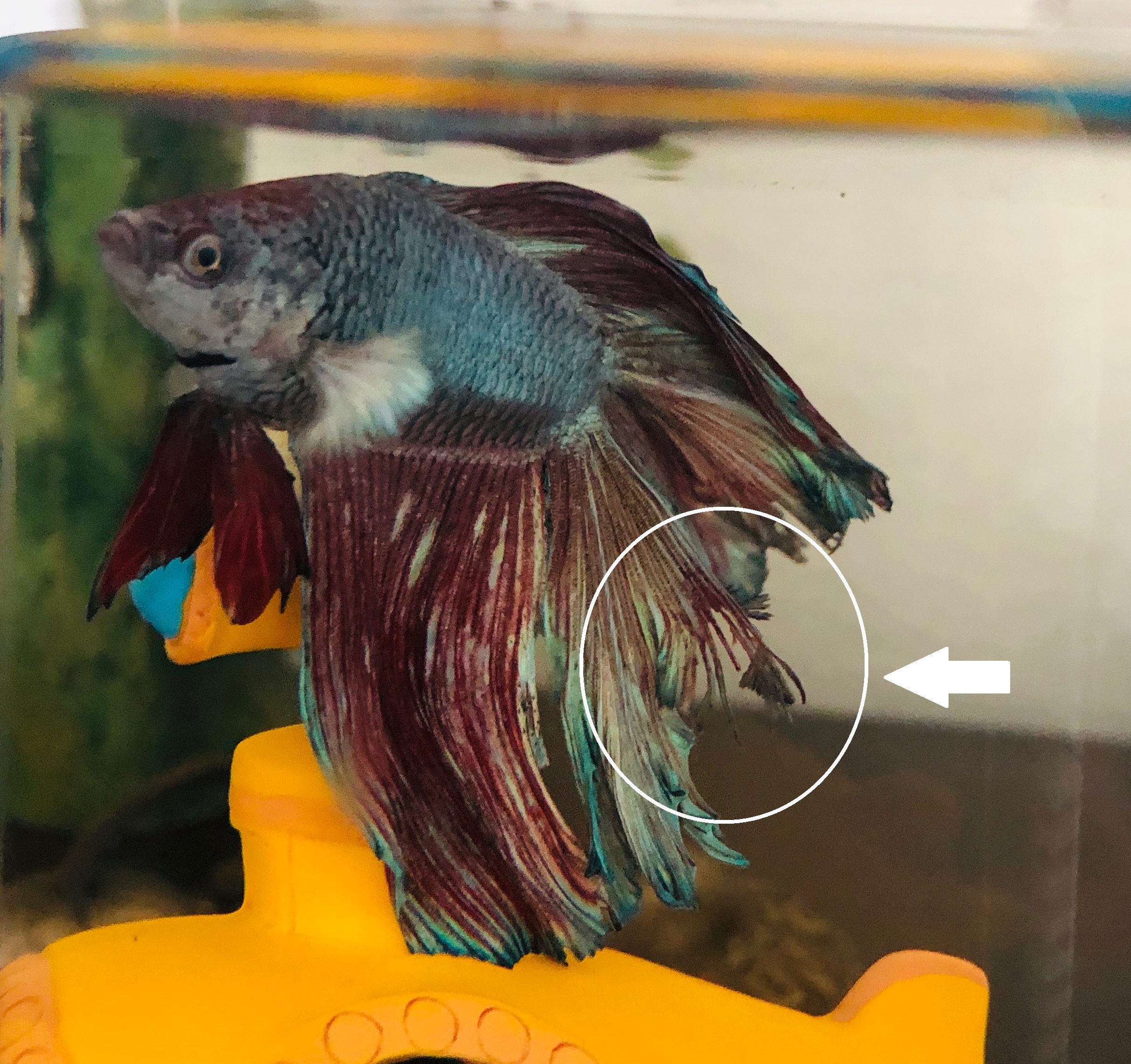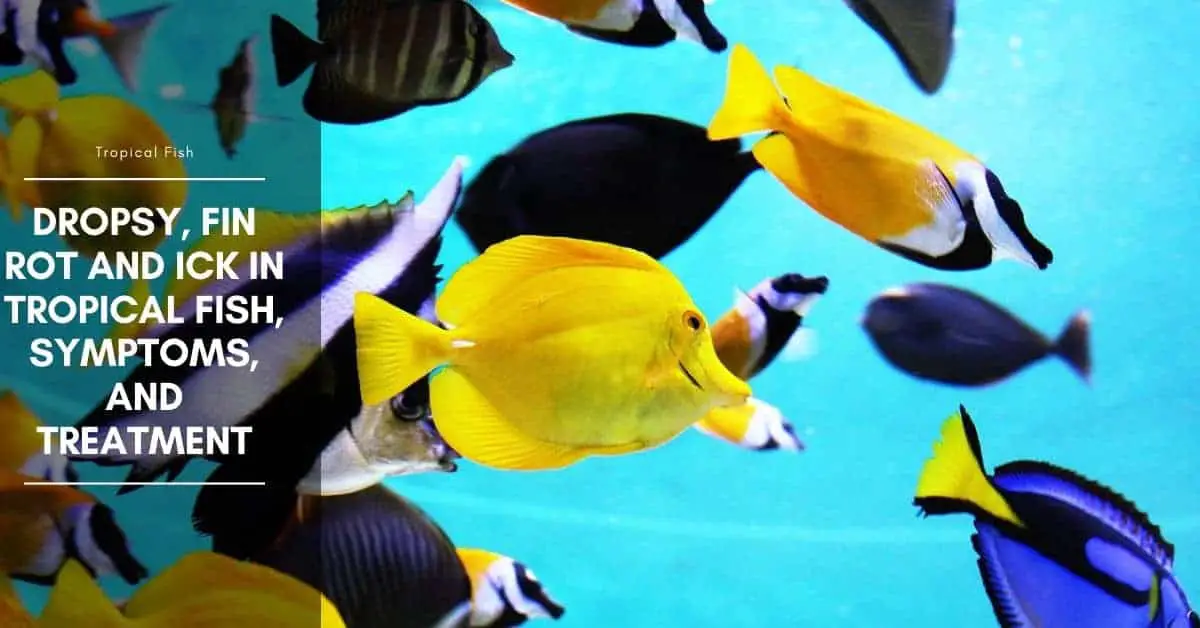You may run into a problem with your fish that is unique to that individual fish but there are some common health problems or behavioral problems that tropical fish have which you may need to address. Let’s take a look at them in greater detail here so you can be aware of them and can correct them as well.
Fish Ick or Ich
Yes, that’s a real name for a condition your fish may get. It is characterized by white drops or spots on their bodies and that they are suddenly getting slow or sluggish.

Fish ick is really an organism that starts in the water and that attaches itself to your fish where it stays for a while before letting go so that it can float free again.
Ich has a particular cycle of about three weeks, so you may notice your fish with the condition for only a short time.
How to Treat Ich on Tropical Fish?
To combat this problem before it really affects your fish, raise the water temperature to about eighty degrees so that it’s too warm for the fish ick to survive on your fish. They release, and then you can add a small amount of medication to the water to get rid of them completely. It’s a good idea to continue adding medication for a full two weeks to be sure it’s gone entirely.
Ick is rather common in many tanks and is not typically a sign of anything more serious that’s wrong with your fish or your tank, but it’s a condition that should still be addressed promptly.
Ick is a common disease also on betta fish.
API STRESS ZYME Freshwater and Saltwater Aquarium Cleaning Solution 16-Ounce Bottle
API ACCU-CLEAR Freshwater Aquarium Water Clarifier 4-Ounce Bottle
30% OffTetra Water Clarifier, Aquarium Treatment Solution, 8.45 oz, Clears Cloudy Aquarium Water, Safe to Use with Fish and Plants, For Fresh Water
$8.49 (as of June 30, 2025 07:12 GMT +03:00 - More infoProduct prices and availability are accurate as of the date/time indicated and are subject to change. Any price and availability information displayed on [relevant Amazon Site(s), as applicable] at the time of purchase will apply to the purchase of this product.)Dropsy
Dropsy eats away at your fish’s internal organs. It is a very dangerous disease and one that can kill your fish easily if not taken care of. While there are many things you can do to treat the disease, it’s always better to prevent it in the first place.

The symptoms of dropsy are difficult to detect except for the trained eye. Your fish needs to be very sick on the inside to show signs on the outside. A swollen abdomen and scales that stick out slightly are the most common symptoms of dropsy. Listlessness, not eating properly, a change in color, or spending more time at the top of the bottom of the tank are also common symptoms of stress, so these two might be present when any fish is sick.
Dropsy is not a contagious disease so you don’t need to notice symptoms on more than one fish for it to be present. However, it is possible for one fish to pass it on to another so a sick fish should be put in a quarantine tank if you suspect dropsy.
Treating Dropsy in Tropical Fish
Antibiotics are best for treating dropsy, as well as adding a teaspoon of aquarium salt per ten gallons of water to your tank to kill the bacteria that may be present.
The most common cause of dropsy is poor water quality. Changing your water on a regular basis cannot be emphasized enough when it comes to your tank’s condition and the health of your fish overall.
If you change your water and use antibiotics and still don’t notice any change in your sick fish, it’s time to seek medical help. Dropsy is very serious and will cost you the fish’s life, as well as other fish if not caught in time, so it needs to be addressed.
Fin Rot in Tropical Fish Tank
Who would have thought that something that lives in the water could actually get any type of rot?
In reality, fin rot is a very common condition for many tropical fish, but it is also a very treatable condition.

Symptoms
Rotted or ragged looking fins, white edges on fins, or puffy sores on the fins, are all signs of fin rot. In the later stages of fin rot, you might also notice a loss of appetite.
Typically it’s a buildup of bacteria that causes fin rot, so again, water changing is imperative to keep your fish healthy. Stress is also a factor, and the thing that gives fish the most stress is bad water quality.
Bullies are another cause of fin rot; more aggressive species of fish may nip at other fish, making their fins more susceptible to injury and disease. Be careful about your selection of fish when stocking your tank and make sure that if you must have aggressive fish that your tank is large enough so that there can be a separation between them and other fish.
Treatment for Fin Rot
You must change your water and have regular testing and corrections when needed. Remember, your fish are relying on you to make up for the fact that they don’t live in nature with its natural filters and cleansers.
If improving your water quality does not help the fin rot, there are antibiotics you can purchase which help. Make sure you’re doing everything you can to correct the conditions that bring on fin rot as you use the course of medication as well since if you don’t you’ll just have more cases.

Hi, my name is Sean, and I’m the primary writer on the site. I’m blogging mostly about freshwater and saltwater aquariums, fish, invertebrates, and plants. I’m experienced in the fishkeeping hobby for many years. Over the years I have kept many tanks, and have recently begun getting more serious in wanting to become a professional aquarist. All my knowledge comes from experience and reading forums and a lot of informative sites. In pursuit of becoming a professional, I also want to inspire as many people as I can to pick up this hobby and keep the public interest growing.
Read more about Sean.
Please join also my Facebook group.




















